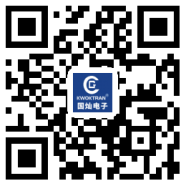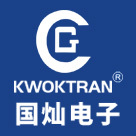What should be considered in designing capacitive touch screen system
Release time:
2019-11-24
In a traditional resistive touch panel, when the finger or stylus is sensed, the top layer of flexible transparent material is pressed down to contact the conductive material layer below; Projective capacitance screens have no moving parts.
In a traditional resistive touch panel, when the finger or stylus is sensed, the top layer of flexible transparent material is pressed down to contact the conductive material layer below; Projective capacitance screens have no moving parts. In fact, the projection capacitive sensing hardware consists of a glass top layer, followed by X and Y axis components, and indium tin oxide (ITO) insulation covering the glass substrate. Some sensor suppliers will make a single layer sensor, embedded X and Y axis sensors and small bridging components in a single layer ITO, when fingers or other conductive objects near the screen, a capacitor will be generated between the sensor and the finger. This capacitance is relatively small relative to the system, but can be measured using a variety of techniques.
When the touch screen is working, it can be divided into many modes, such as touch Wake up (WOT) and CheekDetect (CheekDetect). For example, when answering a 5-minute call, the phone may switch to touch mode for 10 seconds while viewing or entering the phone number, and then switch to WOT or cheek detection mode when reminding the call. Even when sending text messages (SMS), there is still a mixture of WOT mode and actual finger contact, and the controller IC switches between various sleep modes when typing or thinking.
If these power modes are not taken into account, it is easy to be misled by the system's power consumption. In most cases, the touch screen is switched to cheek detection and touch wake mode 90 to 99% of the time. Some systems allow users to set their own ratio of processing time to sleep mode, even while their fingers are still on the panel. If the system only detects that the finger is in the same position, the 200MHz picture update rate is not required. To develop a high performance touch screen, it is necessary to use the sleep mode of low power system, coupled with innovative sleep and wake modes to work.
There are many other important factors to consider when designing a capacitive touch screen system:
Finger capacitance: refers to the capacitance measured between the finger and a single sensor assembly. Finger capacitance is measured using a real finger, rather than a metal mechanical finger, to ensure that the measurements are realistic. Factors that affect the return capacitance (CF) include the thickness of the lens covering the upper layer and the dielectric constant of the material covering the outer layer.
System background noise: System background noise refers to the noise measured from the capacitor to the output of the digital converter and is the input (capacitance) value of the data converter.
Signal-to-noise ratio: The signal-to-noise ratio (SNR) is the ratio of the finger signal measured by the sensor to the measured noise. This is an important parameter that designers must understand in order to develop an efficient touch panel. The system must be able to adjust, adapt and filter parasitic noise in the moving system. To achieve a high signal number and a low noise number, a precise analog front end component may be considered for touch control functions.
Related news
Three Compositions of Supercapacitors
2019-11-17












